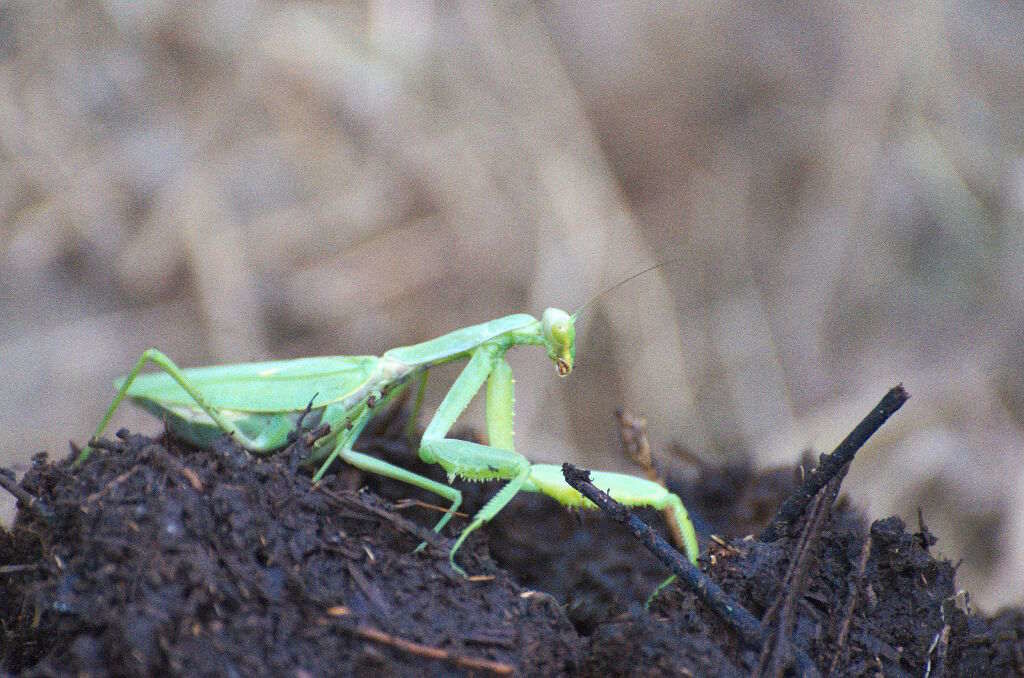
Praying mantis
It is one of the many intriguing insect species found in the Great Himalayan National Park (GHNP). Known for its distinctive posture that resembles hands folded in prayer, the praying mantis is a silent predator and a master of camouflage, making it a fascinating creature for visitors and researchers exploring GHNP’s biodiverse habitats.
In GHNP, the praying mantis is typically observed in temperate and subtropical forest areas, especially during the summer and monsoon seasons when insect activity is at its peak. These insects thrive in dense foliage, meadows, and forest undergrowth where they can remain hidden from predators and ambush prey with precision.
The Sainj and Tirthan valleys, known for their rich plant diversity, provide an ideal environment for the praying mantis, along with countless other invertebrate species that form the foundation of GHNP’s ecological web.
These insects are usually green or brown, with long, slender bodies that help them blend seamlessly into leaves and branches. Their triangular heads, large compound eyes, and rotating necks give them exceptional vision and hunting ability. These insects are solitary and ambush predators, feeding on a variety of insects including grasshoppers, flies, and moths.
When disturbed, some species of praying mantis display startle behavior, spreading their forelegs or wings to appear larger to predators.
The praying mantis is a beneficial insect, helping to control pest populations by feeding on herbivorous insects. As both predator and prey, it plays a critical role in maintaining ecological balance within GHNP.
Conclusion
Though not endangered, the praying mantis is a valuable part of
Great Himalayan National Park
‘s insect diversity and contributes to the health of native forest ecosystems. As a top insect predator, it serves as an indicator of environmental stability and habitat quality.



